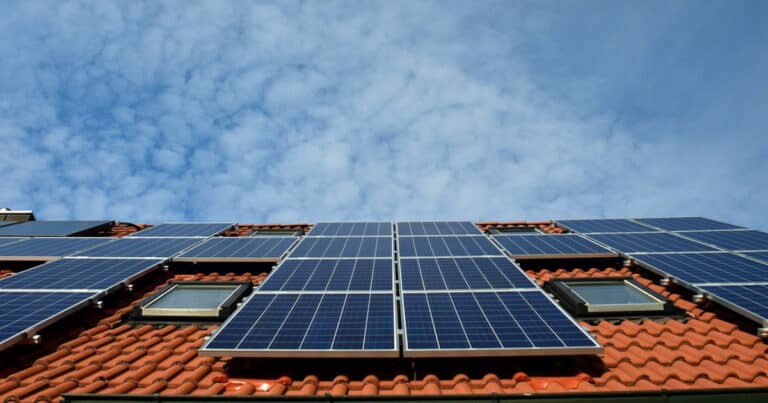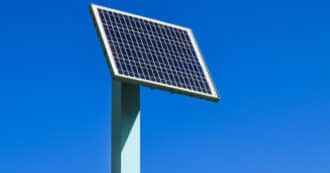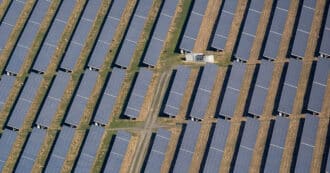By Matthew Mausner – Turning sunlight into energy is a remarkable accomplishment. Solar energy refers to photovoltaic cells contained within a solar panel, which turn the sun’s radiation directly into usable energy in a human-created power grid. This form of energy is in certain ways the best way to generate electricity locally and one of the many advantages of solar energy is that it can be generated relatively sustainably in climates and locations with lots of sunlight.
Except for manufacturing the materials to create the solar panels and equipment, and transporting and installing the panels, solar energy is renewable and sustainable. It is an ideal to aspire to in certain key ways compared to the conventional options for power generation, which are power from fossil fuel burning including coal, oil, and natural gas; nuclear power; and hydroelectric power.
Solar use in the world today
As photovoltaic technology improves, more and more possible variations of a solar array or system become possible. In certain high-sunlight regions like southern California, Israel’s Negev desert, the Persian Gulf, and elsewhere, there are large and efficient solar energy production sites operating by a variety of principles. Even in places as far north as Germany and Denmark, there are efforts to create large scale solar energy systems because of those societies’ commitments to sustainability.
What are the advantages of solar power compared to other options?
A great challenge for power generation is that it is difficult to store or transport. The World Bank estimates that over 8 percent of electricity is lost through the transmission network before reaching any customer. This is after the 50 percent or more power that is lost as heat in generating electricity at the power station.
Distributed solar power has the lowest transmission loss as it can be sited near the customer (consider a solar panel on your roof). This avoids energy being lost in being transported over wires to places where it is used in households, businesses, and factories.
So a significant advantage of solar energy is that it can be produced and used locally, even on the same site, in a more economical way than other energy sources.
Disadvantages of fossil fuels as compared to solar
Fossil fuels as a source of power have large and visible negative net costs to the environment. First of all, Their use entails a large amount of pollution including smog and greenhouse gases. There are also polluting impacts in the extracting and mining, in the burning/ use, and even in the side effects, spills, and toxins of the entire fossil fuel process.
They have literally fueled humanity’s massive rise since the industrial revolution, but at great cost to the web of life on earth. Fossil fuels are also finite- we are using up millions of years’ worth of what is essentially previous eons of carbon-based life, compressed by geology into fuel, but not renewing itself within the timeline we live.
Smart and efficient solar systems
Solar power is produced in daylight hours, and because of the difficulties of storing energy and transporting it, it’s best to use it locally during those hours of peak production. Smart net metering and ‘smart’ technologies that can allocate energy as needed can bring great benefits.
Armed with such data, one can schedule high-energy-use activities like factory production for times when energy is more efficiently available. This can lower energy bills and incentivize use of clean energy and reduce carbon dioxide pollution.
Disadvantages of other renewable energy sources aside from solar
Wind energy is considered to be even less reliable than solar, since wind intensity can fluctuate. The large windmills that generate enough energy to register on the grid and contribute significantly to human energy needs also create problems such as noise pollution with some impacts on birds and fish and insects.
Hydroelectric energy often causes huge impact to the environment in the form of dams, interfering with fish migration and flooding unique ecosystems. There is also very little room for that form of electric power generation to grow, as most major rivers are now dammed and used as energy sources.
Mining the materials used in solar panels
The metals and other relatively rare materials involved in photovoltaics and other solar power systems are non renewable resources. Mining or even repurposing them into the process of manufacturing solar panels causes environmental impacts.
Assessing the costs and benefits of solar
So to truly reckon on the cost of solar, we need to factor in the impacts of such mining and manufacturing, which does potentially scar the earth or leave toxins in the environment. Any accounting in comparison with fossil fuels or other renewable energy techniques needs to balance these net costs and impacts.
Disadvantages of Solar: Local environmental impact
In some ‘solar farms’, the methods used are more like reflecting mirrors focusing on a central heated turbine where the concentrated heat energy generates electricity. While these are often placed in desert locations not suitable for agriculture, they do sometimes cause many birds to be drawn to the light and then seared or killed by the heat.
Solar Energy as a solution
So by comparison, solar energy might be close to the most sustainable of the options to provide electric power for human needs. That begs the question: what do we need it for? Economic forces do tend to push towards ever more efficient technologies, if only for cost savings.
But with ever increasing modernization of eight billion people or more’s lifestyles and travel and distribution of goods and food, it would seem that no amount of efficiency will bring us into a ‘steady state’. It seems likely that the only way we will get our civilization into balance will involve a true shift in the way we live.
Is Solar enough?
We can save money on our electric bills, we can give tax credits for installing solar or other renewable energy sources for home energy. But this will likely not be enough to curb climate change and avoid its most drastic impacts.
Spiritual benefits of solar
How can we understand how using, and living within the implicit limits of, solar power, would point us towards a more healthy spirituality? A verse in the Book of Genesis (14:10) can shed light on this question: “Now the Valley of Siddim was dotted with bitumen pits; and the kings of Sodom and Gomorrah, in their flight, threw themselves into them, while the rest escaped to the hill country.”
Oil in the Bible
Rabbi Yonatan Neril and Rabbi Leo Dee explored this verse in the Eco Bible: “The kings of Sodom and Gomorrah fell into pits of “black gold” or bitumen, also known as asphalt (in Hebrew, chemar).
“In ancient times as today, surface seepages of this thick, sticky form of crude oil occurred and still occur in a limited number of places in the world. People used and still use the natural tar for its waterproofing qualities and for roads.
What does the Bible imply about oil? (Solar didn’t exist then)
“Why does the Torah mention this geological detail in relation to the leaders of these ultimately decimated societies? The Torah continues, “The invaders [four Middle Eastern kings] seized all the wealth of Sodom and Gomorrah and all their provisions, and went their way” (Genesis 14:11).
“Once the kings of Sodom and Gomorrah fell into the bitumen pits, they got trapped and lost all of their wickedly gained wealth. The story of the kings stuck in bitumen relates deeply to our world today.”
Disadvantages of Bitumen as compared to solar
Bitumen is considered the dirtiest and most polluting fossil fuel, due to the energy required to separate the crude oil from the sand and the carcinogenic chemicals used to thin it for pipeline transport. In July 2010, the largest oil pipeline spill in US history occurred, spilling over a million gallons of Canadian diluted bitumen (dilbit) into Michigan’s Kalamazoo River.
As Inside Climate News reported, “The spill triggered the most expensive [on-land] clean-up in US history – more than ¾ of a billion dollars – and it lingered on for years.” Pipelines for transporting tar sands oil are still being built in the U.S.
Trapped in Fossil Fuel use
Today, we and our leaders are trapped in fossil fuel use by economic inertia and political resistance. Oil remains our fuel of choice to make gasoline for cars and trucks, jet fuel for airplanes, tar and asphalt for paving roads, and even plastics which are filling our oceans with toxic trash that never fully breaks down.
Solar in the Book of Genesis
The rabbis of the Midrash (around 5th century C.E.) teach that Abraham, the prophet of light, pulled the kings out of the bitumen pits. Abraham provides an example of lifting people from being trapped in oil.
The sun’s rays are emissaries of light, like angels sent here to provide light and energy to the earth. Genesis chapter 1: verse 14-15 state, “And God said, ‘Let there be luminaries in the expanse of the heavens, to separate between the day and between the night, and they shall be for signs and for appointed seasons and for days and years. And they shall be for luminaries in the expanse of the heavens to shed light upon the earth.’ And it was so.”
The choice to use solar
We are blessed with abundant sunlight that we can utilize to create energy, instead of using fossil fuels. The choice is ours.
A key advantage of solar energy is that it is an alternative to fossil fuels. From a sustainability perspective, it’s clear that we can’t power an industrial economy on fossil fuels. In light of this, when will we change course?
* Featured image source
Interested in learning more about renewable energy? Check out our post on wind energy!








